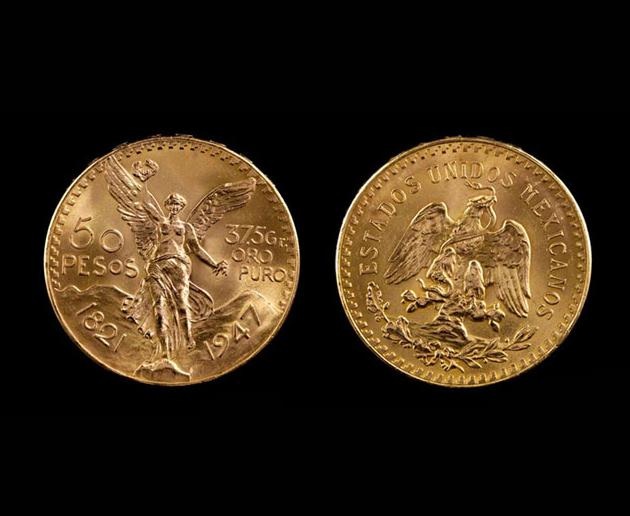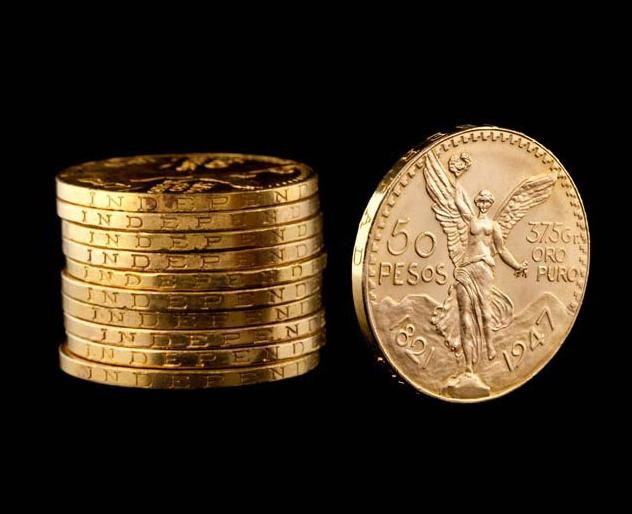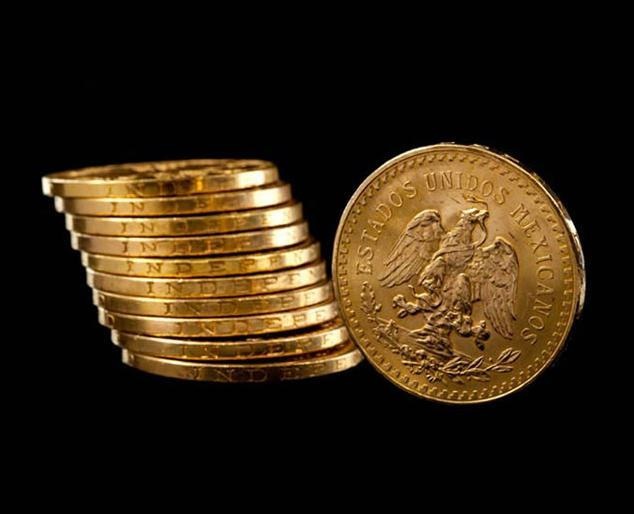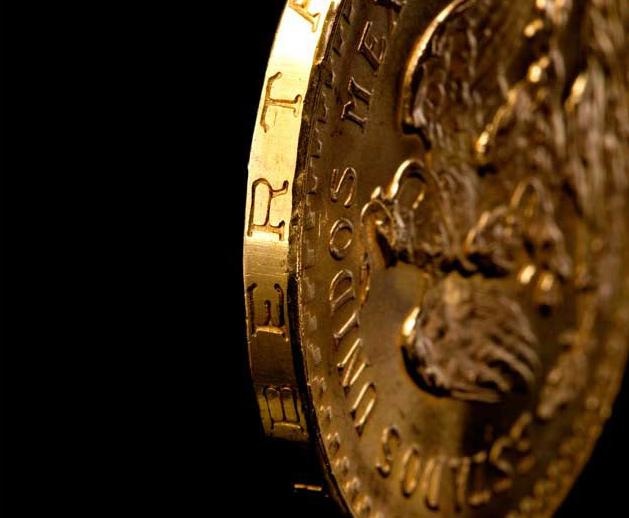Mexican 50 Peso Gold Coin
Gold bullion coin investors wanting gold coins with small premiums should consider the Mexican 50 Pesos gold coin, which contains 37.5 grams (1.2057 oz) of gold in an alloy of 90% gold and 10% copper (21.6 karat). For durability, most gold coins in the Western World have been alloyed with copper.
First issued in 1921 to commemorate the 100th anniversary of Mexico’s independence from Spain, the Mexican 50 Peso gold coin is also known as the Centenario.
The Mexican 50 Pesos gold coin is strikingly beautiful and is 20% larger than the popular 1-oz American Gold Eagle coin. The
obverse of the Mexican Gold Coin 50
Pesos has an image of Winged Victory, with a laurel wreath in her
right hand and broken chains in her left. Two famous Mexican
volcanoes, Popocatepetl and Iztaccihautl, rise in the background.
The 1821 on the lower left commemorates the year of Mexico’s
independence. The date on the right indicates year of
mintage.
Between 1949 and 1972, nearly four million pieces were struck, most likely dated 1947. These are referred to as restrikes; the earlier 50 Pesos carry small premiums over the restrikes, except for the 1921 and the 1931 coins, which can have large premiums. The reverse depicts the Mexican Coat of Arms, which is an eagle perched on a cactus with a serpent in its beak.
The photos are of a “mint condition” 50 Pesos.
When Americans regained the right to own gold bullion on December 31, 1974, Mexican 50 Peso gold coins quickly became one of the gold bullion industry’s standard bearers, along with the Austrian 100 Corona.
The tremendous success of Krugerrands in the early 1970s drove the 50 Pesos and the 100 Coronas into obscurity, where they have remained. Yet, today, when the Mexican 50 Peso and the Austrian 100 Coronas are available, they offer investors gold at the lowest premiums.
Price: $ 2,899.00



